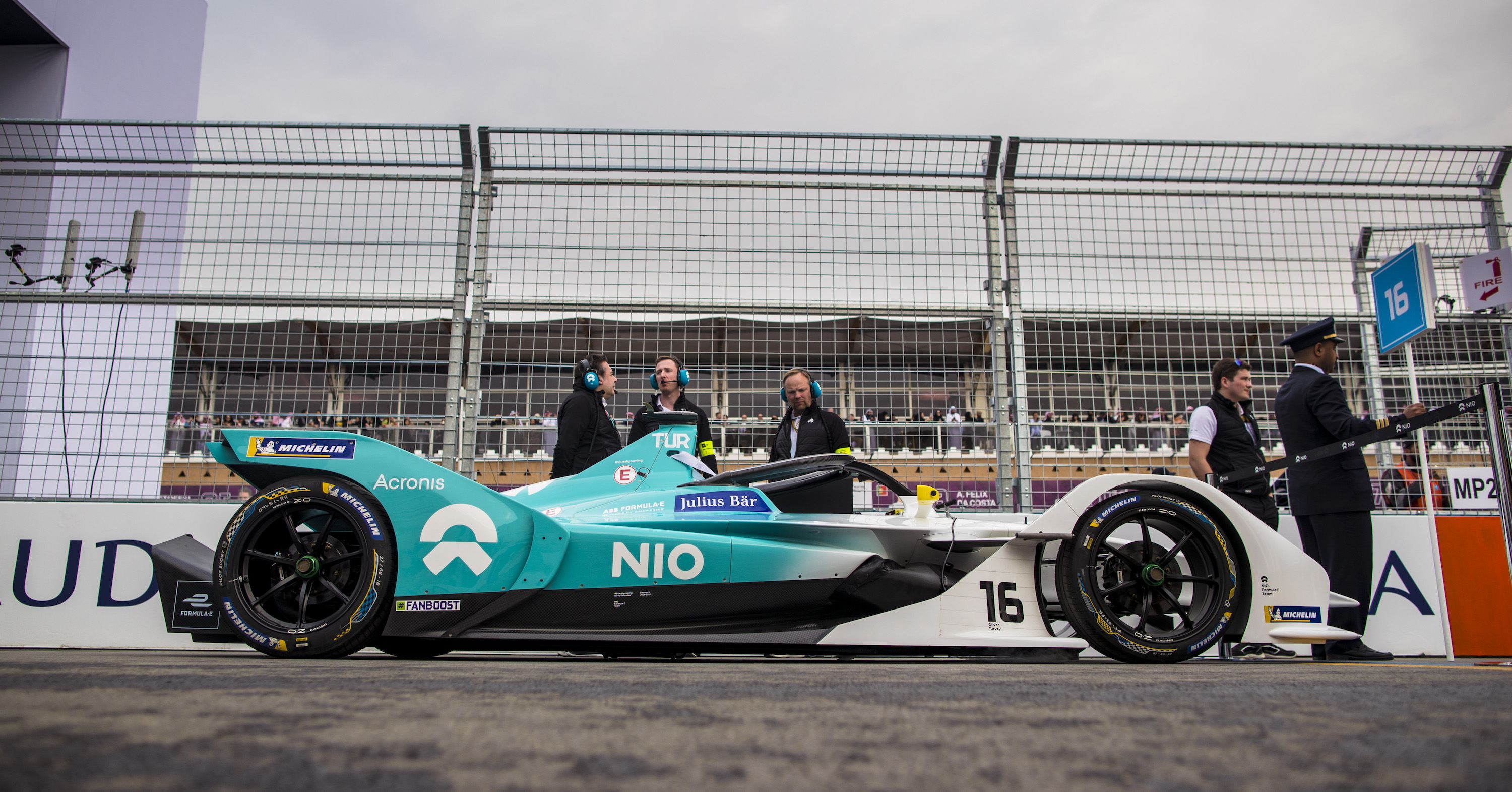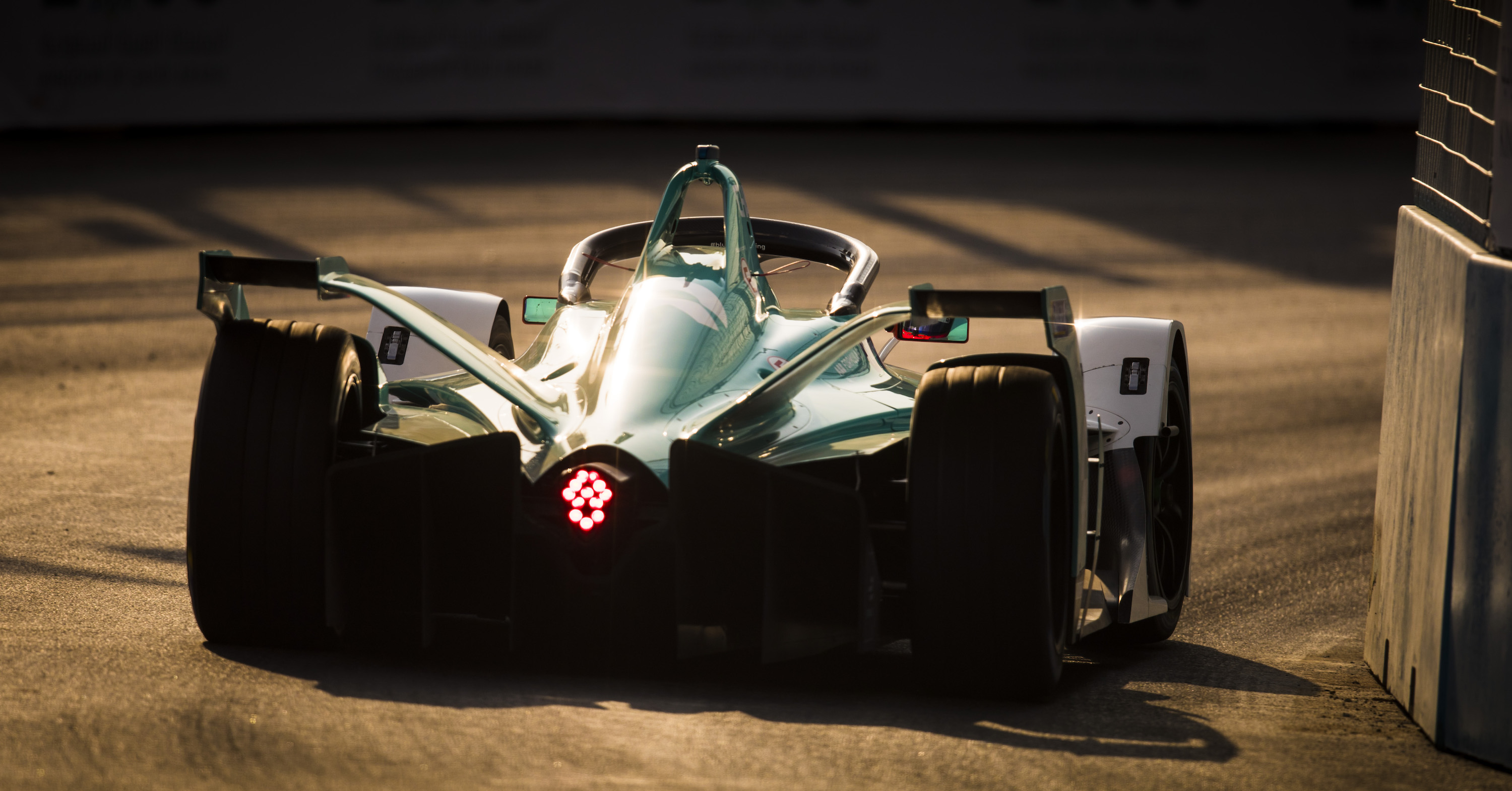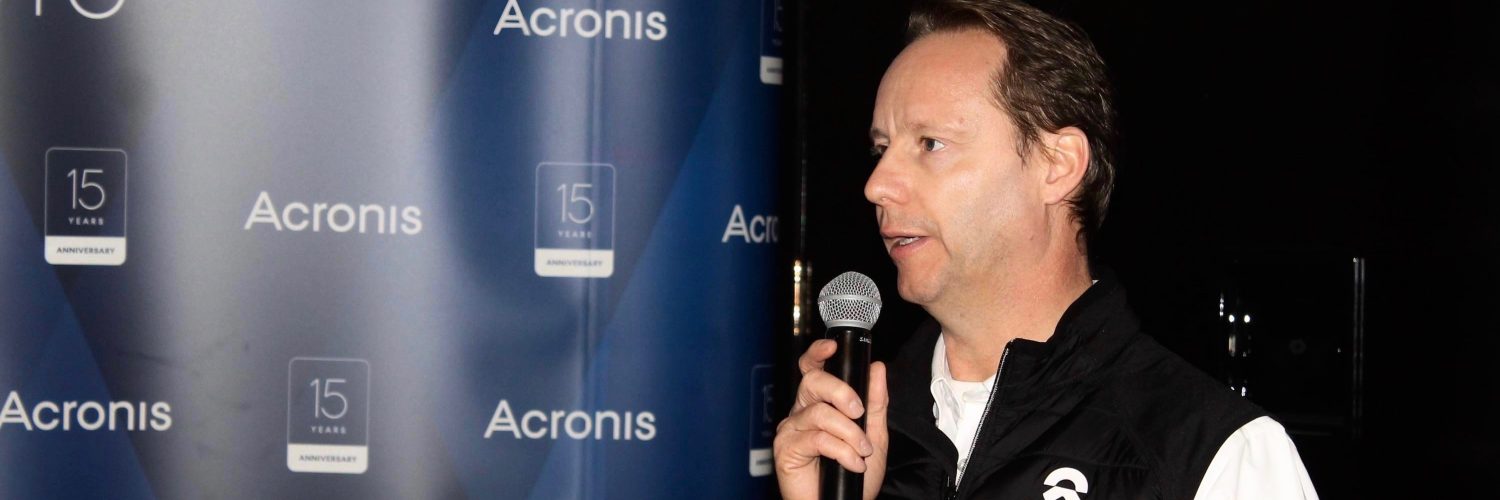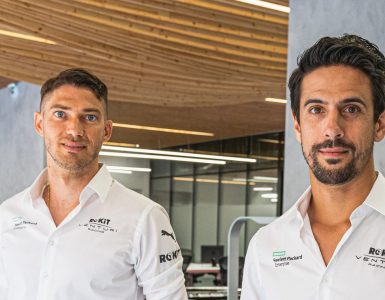As the new Gen2 cars hit the Ad Diriyah circuit for the most eagerly anticipated season in Formula E history, Acronis was delighted to be able to delve into the mind of NIO Formula E Team Principal Gerry Hughes as the sport enters an exciting new era.
What was the most surprising thing for you in the Gen2 car?
GH: I suppose the levels of technology and the levels of the complexity of those technologies in Formula E has been interesting from an engineering point of view. It has been tough, it has been a steep learning curve during the course of the summer during manufacturer testing, so it’s not an easy question to answer. But clearly, the advent of having brake by wire, or BBW as it’s called by the engineers on board the car, has brought a new level of complexity in terms of how we manage that torque balance with and without regeneration during the course of a race, harvesting the energy. So, it’s been an interesting addition to the car.
Clearly, the car is all new as well, there is new architecture on the vehicle, so altogether there has been a great deal to be introduced to, to understand, to get on top of and obviously from a performance point of view, to optimize going into Season 5 here in Saudi. So I think, to put it in a nice and simple way, our learning is effectively just starting out on that long journey. The likelihood is we will have the Gen2 car for four seasons now for seasons 5, 6, 7 and 8, so we’ve got that next four years to fully learn and understand and optimize all the performance in this car. And with various changes as we’ve seen in the Generation 1 car like lifespan, there is a lot for us to learn. So exciting times but essentially, we’re starting on that journey now.
How much influence does the team have on the development of the car?
GH: The car has elements of hardware and software. It’s an amalgamated package: half mandated car, half manufacturer’s package. As a manufacturer, we develop the electric motor, gearbox, and power inverter to control the energy – both spending and harvesting. All these components work together. We can’t touch the parts that are mandated by the regulator. It’s a way for the series to keep it simple and control the costs.
Certainly, the bit that we can continue developing during the course of the season, is software. We have control systems software that the drivers use during the course of the race to control the engine. The cars have data requisition systems, which collects data from sensors monitoring temperatures, speed, pressures. We also have a system to protect all that data, to manipulate that data, and analyze that data. And that is what we use ultimately to improve the performance of the car and make it go faster at the end of the day.
Engineers love data. It’s a very much software-driven development program during the course of the season.
How much data do you collect?
GH: Each car generates about 1GB of data during the course of the race. So, it’s about 4-5GB per car per weekend. There isn’t a huge number of sensors on the car, because it’s another side that is regulated from the cost perspective. But this data has to be securely stored and transported. We have data servers at the circuit and at the factory. This data, once captured, has to be very carefully controlled and managed.
Is it where Acronis comes in?
GH: It’s great to have Acronis as a technical partner going into to Season 5. Since the team’s inception, we’ve grown very quickly. It’s now great to have the support of Acronis. It’s great to be able to back up our data because we are transporting data around the world to each race. Backup is certainly fantastic. But the cybersecurity element also comes in in what Acronis does for us. We get complete cyber protection, which is great.
As you can imagine, our IP in terms of performance is locked into that data, so we need to keep it secure. Acronis software and systems allow us to do that with a great degree of security and a great degree of file management flexibility.

Which Formula E track is the most complicated and difficult for engineers and why?
GH: Again, another interesting question. I think there are some very challenging circuits we’ve been to, certainly over the years and I think Santiago was a challenging circuit but for all the wrong reasons in terms of the road surface roughness. Everyone we go to is unique, everyone has different characteristics and I have to say probably from a driver’s perspective and from an engineer’s perspective, this one in Saudi Arabia has got to go down as fairly unique. In sector two we have a long combination of corners, left to right-hand corners where overall balance and the flow for the drivers is going to be really important and you’ll lose a massive amount of time if you’re not on top of the car and not on top of the balance through there.
Ultimately, you’ve got to push in qualifying just enough to make sure that you’re extracting performance out of the car without running off or just touching the wall. We’ve seen in the previous Jaguar iPace challenge that people are just touching the wall. It’s very difficult as these cars are very big, very heavy, very wide and it’s a very narrow circuit. So, I’d have to say that from the circuits we’ve been to so far, this, although we’ve only just done the shakedown session, is one that’s going to be a challenge for both drivers and engineers alike, for sure.
Is there any track in the world that is not included in the Formula E calendar where you would like to see the Formula E race?
GH: Having been involved in racing for 30 odd years, and 13 or so of them in F1, I’ve been to some lovely circuits. I suppose the series is very, very different from other forms of motorsport and other forms of motorsport that Acronis is involved in. I think it would be lovely, fanciful perhaps, to go to some of these Formula One circuits because they are fast, they are big, they are open. But Formula E is perhaps not on that level of performance, at the moment, to really show what the cars can do on these circuits, Spa-Francorchamps being one of them, Monza being another, Silverstone in the old days being another and some of the circuits I’ve raced on in the United States. I think there are some wonderful circuits around the world but, at the moment, where Formula E is, I think we’re actually in the right environment, we’re racing on the right circuits. We’ve got the right challenges.
In the future, as the cars continue to evolve, from a technology point of view particularly with respect to the battery and performance point of view, as a manufacturer and a team principal and involved with the promoters of Formula E and the FIA, we’ll have to see how the circuits may have to evolve to follow the technology roadmap of the Formula E series. It will be interesting to see whether we do move away from slower street circuits which are inner city based but watch this space, I suppose!

It’s too early to judge, but if you imagine a Formula E Gen3 car what you would like to see in it? More speed? More aerodynamic efficiency?
GH: I don’t want to comment too much on this because we are just starting the process with respect to the Gen3 car and how do we formulate the technical rules, the technical roadmap for the car itself and, ultimately, what the car will look like. Will it look very different from the Gen2 car? Clearly, there will always be a drive for Power Train. It’s a Power Train formula, first and foremost that is different from other forms of motorsport where tyre performance and aerodynamic performance is less critical in the overall context of what we’re trying to achieve as a series, and as a sport.
This is all about Power Train and Power Train improvement and so I would expect to see the next generation of battery, the next generation of Power Train in terms of efficiency, overall power, packaging, weight, all of those things which we deal with every single day to advance. But we are just starting out down the road of that Gen3 car and what it may look like from a visual perspective, what technology it may have under the hood, what battery it will have, and I think it’s going to be an exciting journey but it’s a journey we are just starting.
How do you think Formula E championship will look like in 2025-2030? Will the championship become the most prestigious series in the world or will it remain in its own niche?
GH: Again, an interesting question. I suppose if we look beyond Generation 3, clearly the automotive industry is on the cusp of change. We as Formula E are trailblazers in the context of EV racing and now we’ve got a support series in terms of the Jaguar iPace. It’s a long way off in terms of technology and we have a roadmap as a team, as a manufacturer and the FIA has a road map of where the series is going to be. I suppose ultimately, we will follow the technology trail again particularly with respect to battery technology. In nice, simple terms, within four years we have almost been able to almost double the energy density of our battery that we use in Formula E and that’s a quantum step really in terms of battery technology.
It’s very difficult to forecast where we may be in five, six, seven years. Clearly, we will have more efficiency, we will have higher energy densities, we will have higher power densities, we will have reduced weight. Other than that, it is very difficult to predict what the shape of the car will be. I suppose to finish the question off, will we ever be as quick as a Formula One car, will we be as exciting as Formula One racing has been in the past? We will just have to watch this space!
Parts of this interview appeared on championat.com.
Stay tuned for the second part of this interview in which Gerry Hughes talks about what makes a good Formula E driver.




